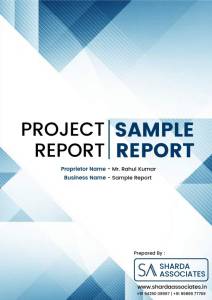Project Report For Rice Sortex
Introduction
Project report for Rice sortex is as follows.
Rice sortex is a sophisticated machine that uses advanced technology to sort and separate rice grains based on their size, shape, and color.
The word ‘sortex’ is derived from the words “sorting excellence,” which is a testament to the precision and accuracy of this equipment.
Rice sortex machines are designed to remove impurities and defective grains from the rice by using high-speed cameras and optical sensors.
These sensors scan each grain of rice that passes through the machine, and the cameras capture detailed images of the grains.
The machine’s software then analyzes the images and sorts the grains based on various parameters such as color, shape, size, and texture.
One of the primary advantages of the rice sortex machine is its speed and accuracy. It can sort thousands of grains of rice per second, which is a vast improvement over traditional sorting methods.
Additionally, it can sort rice grains with an accuracy of up to 99.9%, ensuring that the final product is of the highest quality.
Another benefit of using a rice sortex machine is that it reduces the need for manual labor. Traditionally, rice sorting was done by hand, which was a time-consuming and labor-intensive process.
With the rice sortex machine, the sorting process is automated, which not only saves time but also reduces the risk of human error.
Rice sortex machines come in different sizes and capacities, depending on the specific needs of the user.
Some machines can sort up to six tons of rice per hour, making them suitable for large-scale commercial operations. Other machines are designed for smaller-scale operations, such as family-run rice mills.
In conclusion, the rice sortex machine is a highly efficient and accurate piece of equipment that is essential for the production of high-quality rice.
Its ability to sort grains based on various parameters ensures that the final product is of the highest quality, and its automation reduces the need for manual labor.
With its many benefits, the rice sortex machine is an essential tool for rice producers worldwide.
Market Potential Of Rice Sortex
The rice sortex market is a vital segment of the global rice processing industry. Rice sortex is a process that involves the use of optical sensors and cameras to sort and separate rice grains based on color, shape, and size.
This process ensures that the rice grains are of high quality, free from impurities, and meet the stringent requirements of consumers.
The global rice sortex market is expected to grow significantly in the coming years. The rising demand for high-quality rice, the increasing focus on food safety, and the growing adoption of automation in rice processing are some of the factors driving the growth of the rice sortex market. The Asia-Pacific region is the largest market for rice sortex, followed by North America and Europe.
The rice sortex market can be segmented based on equipment type, capacity, and application. Based on equipment type, the market can be segmented into standalone sortex machines, fully automated sortex lines, and semi-automated sortex lines.
Standalone sortex machines are widely used in small and medium-scale rice processing plants, while fully automated sortex lines are used in large-scale rice processing plants. Based on capacity, the market can be segmented into less than 5 tons/hour, 5-10 tons/hour, 10-20 tons/hour, and more than 20 tons/hour. Based on application, the market can be segmented into brown rice, milled rice, and parboiled rice.
The global rice sortex market is highly competitive, with several players operating in the market. Some of the key players in the market include Bühler AG, Satake Corporation, Key Technology Inc., Tomra Sorting Solutions AS, and Anhui Jiexun Optoelectronic Technology Co., Ltd.
These players are focusing on product innovation, expansion of their product portfolios, and strategic partnerships and collaborations to strengthen their position in the market.
In conclusion, the global rice sortex market is expected to grow significantly in the coming years, driven by the rising demand for high-quality rice, the increasing focus on food safety, and the growing adoption of automation in rice processing.
The Asia-Pacific region is the largest market for rice sortex, and the market can be segmented based on equipment type, capacity, and application. The market is highly competitive, with several key players operating in the market.
Project Report Sample On Rice Sortex
Need Help?
Create 100% Bankable Project Report

